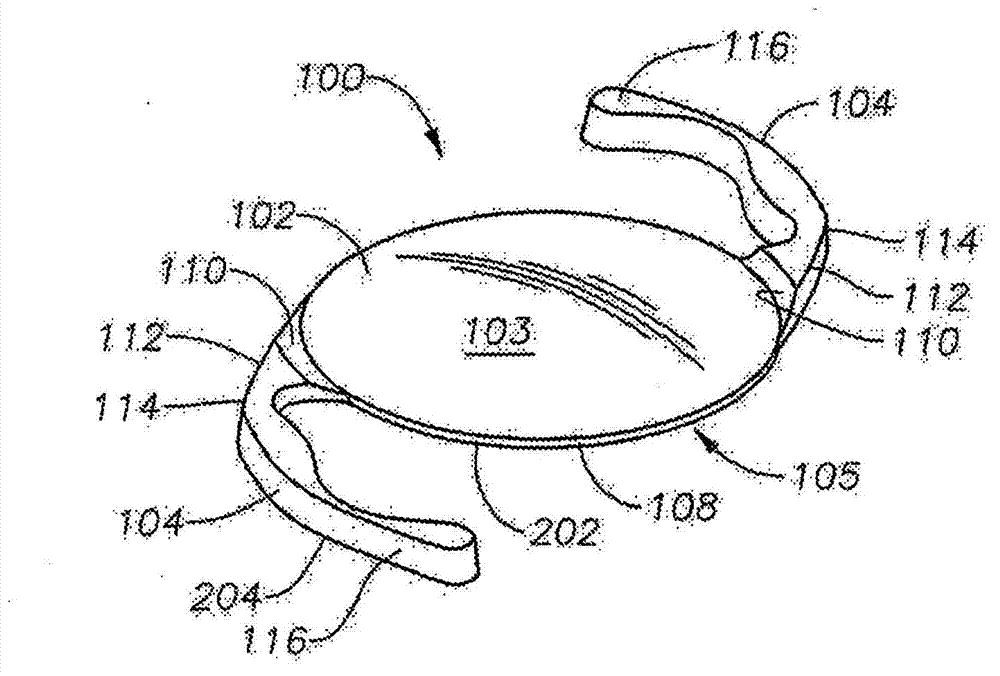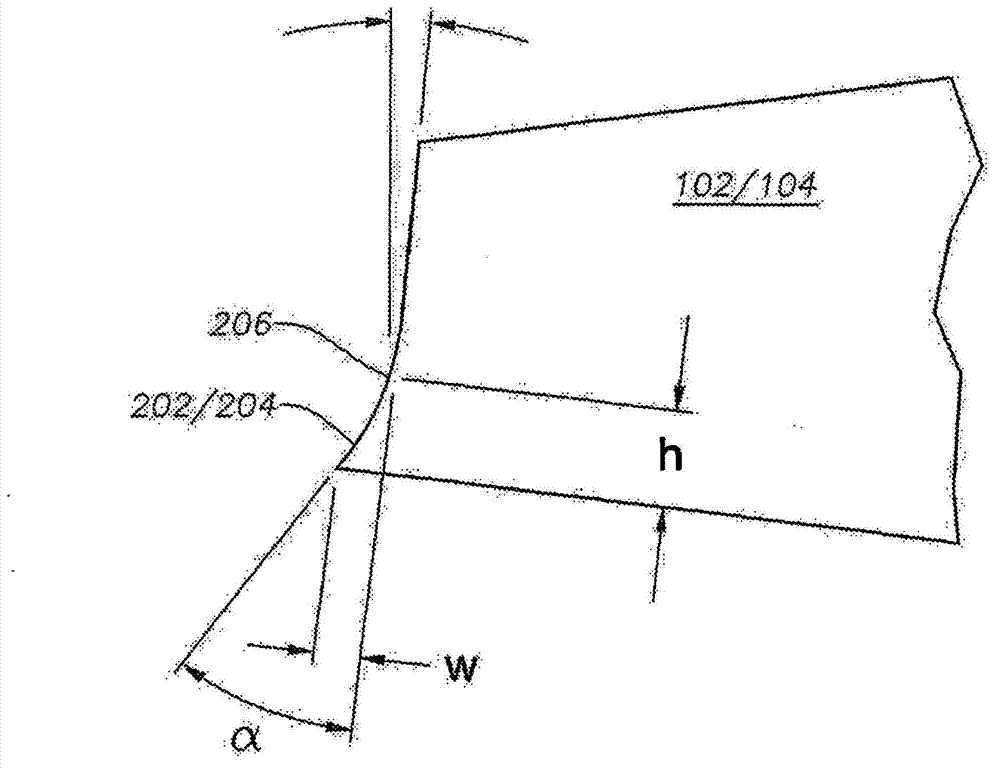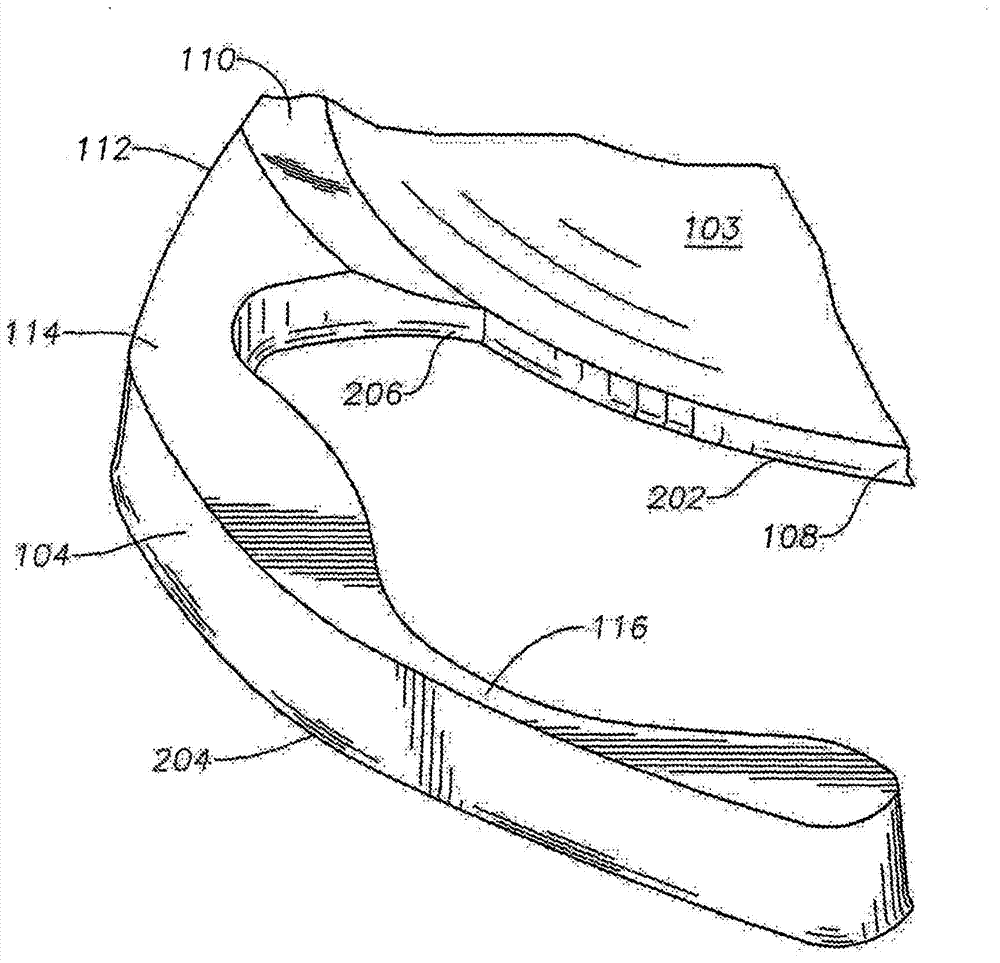Intraocular lens having edge configured to reduce posterior capsule opacification
A technology of intraocular lens and edge, applied in the direction of intraocular lens, prosthesis, medical science, etc.
- Summary
- Abstract
- Description
- Claims
- Application Information
AI Technical Summary
Problems solved by technology
Method used
Image
Examples
Embodiment Construction
[0013] Figure 1A An intraocular lens (IOL) 100 suitable for implantation into a capsular bag of the eye is illustrated in accordance with certain embodiments of the present invention. ( Figure 1B show Figure 1A An enlarged view of the cross-section of the IOL 100 within the dashed box. ) IOL 100 includes an optic 102 , which refers to a central, generally circular body comprising an optical zone configured to focus light on the retina, and a flexible haptic 104 , wherein the optic 102 The haptics 104 are used to position the IOL 100 within the residual portion of the capsular bag after capsulorhexis. Optical component 102 has a front optical face 103 and a rear optical face 105 joined by a peripheral wall 108 . The peripheral wall 108 includes a straight portion 109 of uniform radial width extending rearwardly from the front optical face 103 . The peripheral wall 108 also includes a flared edge 202 that meets the straight portion at a flared point 206 . At flare point 2...
PUM
 Login to View More
Login to View More Abstract
Description
Claims
Application Information
 Login to View More
Login to View More - R&D
- Intellectual Property
- Life Sciences
- Materials
- Tech Scout
- Unparalleled Data Quality
- Higher Quality Content
- 60% Fewer Hallucinations
Browse by: Latest US Patents, China's latest patents, Technical Efficacy Thesaurus, Application Domain, Technology Topic, Popular Technical Reports.
© 2025 PatSnap. All rights reserved.Legal|Privacy policy|Modern Slavery Act Transparency Statement|Sitemap|About US| Contact US: help@patsnap.com



